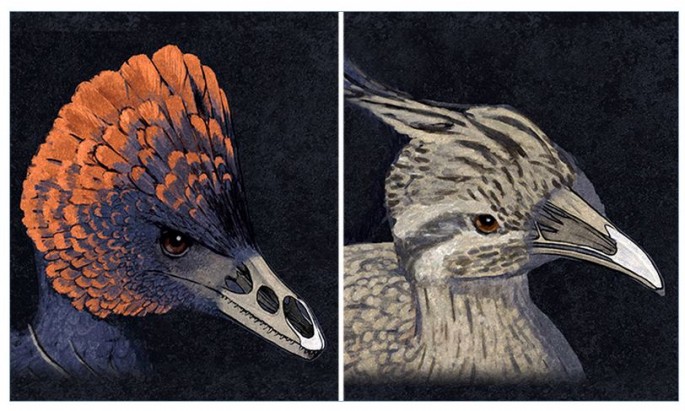In an incredible experiment right out of Jurassic Park, scientists at Yale University transformed a bird's beak into something more closely resembling the dinosaur snout it evolved from.
Yale scientists manipulated proteins in embryonic chicken cells to accomplish this first-of-a-kind feat. This is the first time anyone has successfully replicated the molecular processes that led from dinosaur snouts to the first bird beaks.
By reversing the process that enables chickens to develop beaks instead of snouts, the Yale research team led by paleontologist Bhart-Anjan Bhullar gained insight into how dinosaurs evolved from terrifying killers and giant plant eaters into today's mostly harmless and much smaller birds and chickens.
Using the fossil record as a guide, a research team led by Bhullar and Harvard developmental biologist Arhat Abzhanov conducted the first successful reversion of a bird's skull features.
They replicated ancestral molecular development to transform chicken embryos in a laboratory into specimens with a snout and palate configuration similar to that of small dinosaurs such as Velociraptor and Archaeopteryx.
"Our goal here was to understand the molecular underpinnings of an important evolutionary transition, not to create a 'dino-chicken' simply for the sake of it," said Bhullar, lead author of the study published online May 12 in the journal Evolution.
Bhullar said the beak is a crucial part of the avian feeding apparatus, and is the component of the avian skeleton that has perhaps diversified most extensively and most radically.
"Yet little work has been done on what exactly a beak is, anatomically, and how it got that way either evolutionarily or developmentally", she noted.
Using small-molecule inhibitors to eliminate the activity of the proteins produced by the bird-specific, median signaling zone in chicken embryos, the researchers were able to induce the ancestral molecular activity and the ancestral anatomy.
Not only did the beak structure revert, but the process also caused the palatine bone on the roof of the mouth to go back to its ancestral state.
"This was unexpected and demonstrates the way in which a single, simple developmental mechanism can have wide-ranging and unexpected effects," Bhullar said.
Bhullar said the research has several implications. If a single molecular mechanism was responsible for this transformation, there should be a corresponding, linked transformation in the fossil record.
He said this is borne out by the fact that Hesperornis (discovered by Othniel Charles Marsh of the Yale Peabody Museum of Natural History), which is a near relative of modern birds that still retains teeth and the most primitive stem avian with a modernized beak in the form of fused, elongate premaxillae, also possesses a modern bird palatine bone.
Premaxillae are the small bones at the tip of the upper jaw of most animals, but are enlarged and fused to form the beak of birds. Bhullar noted that this same approach could be used to investigate the underlying developmental mechanisms of a host of great evolutionary transformations.
The researchers never hatched the dino-chicks but studied the subtle differences between the altered and non-altered chicks. Noting that the dino-chicks still had a flap of skin covering their fledgling beaks, Bhullar said: "Looking at these animals externally, you would still think it's a beak. But if you saw the skeleton, you'd just be very confused."
After creating digital models of the embryos' skulls, researchers discovered that some more closely resembled early birds such as Archaeopteryx and dinosaurs such as Velociraptors rather than modern-day chickens.
The other corresponding authors are Zachary Morris, Elizabeth Sefton, Bumjin Namkoong, and Jasmin Camacho, all of Harvard; Atalay Tok, of Uppsala University; Masayoshi Tokita, of Toho University; and David Burnham, of the University of Kansas.



























